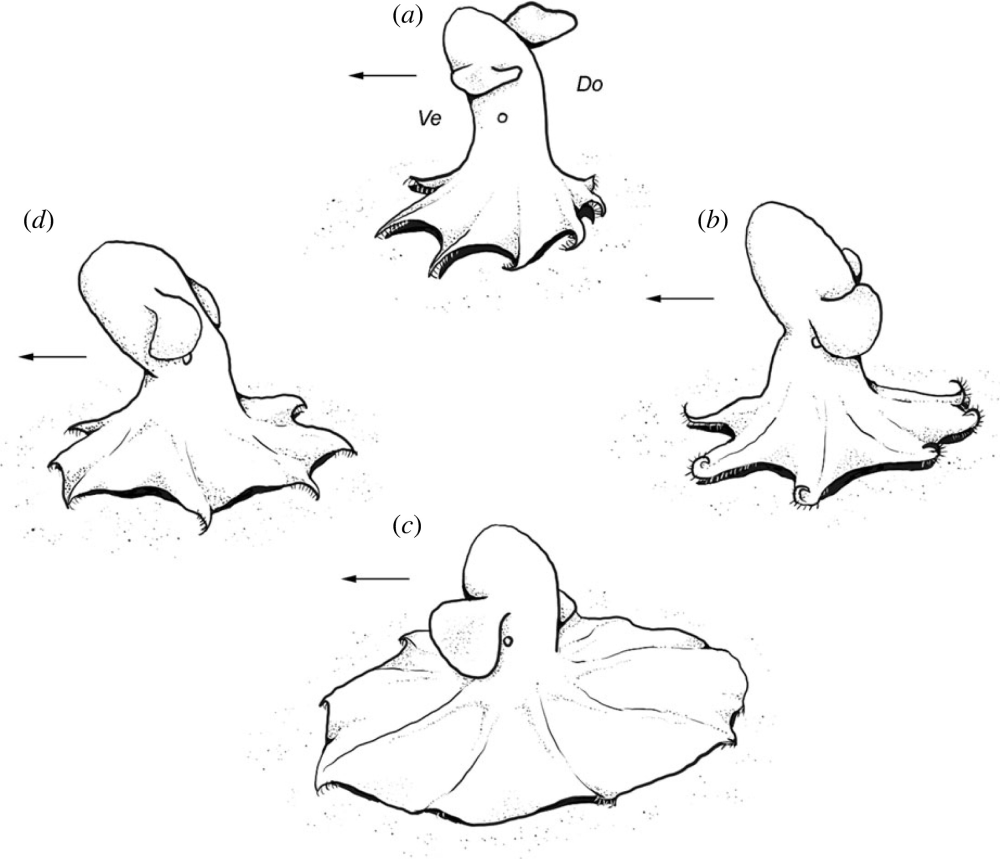Mysterious octagons stamped across the seabed of the Fram Strait between Greenland and Svalbard had scientists scratching their heads. Some were mini while others were bigger than a basketball, but what was causing them? Remote-operated vehicles (ROV) were able to get to the bottom of the peculiar prints, discovering that they appear to be the witness marks of Dumbo octopus feeding events.
At a staggering 1,000 to 4,000 (3,280 to 13,100 feet) meters deep, the bathypelagic zone is one of the largest and least explored biomes on the planet, with the largest animals being the most difficult to study. This is because unlikely microscopic animals, they can’t be caught and transported for study without being damaged beyond identification (did you know the blobfish doesn’t actually look like that?). Deep-sea dwelling animals remain a bit of a mystery and for soft-bodied animals like cephalopod mollusks – an abundant and diverse group in the deep sea – we rely on chance encounters while piloting ROVs to see what they’re up to.

It’s hard to imagine where perfect octagons might come from until you see how Dumbo octopuses feed.
The Cirrata group of octopuses are found in the deep waters of all of Earth’s oceans, sometimes called the “Dumbo octopus” for the paired fins that look like giant ears. They’re thought to feed mostly on worms and crustaceans, but until recently all we had to go on were observations of a single female of Opisthoteuthis sp. that was kept in an aquarium for 53 days.
Deep-sea surveys towing ROVs in the Arctic revealed the presence of many Cirroteuthis muelleri that were found drifting in the water column at 500–2,600m (1,640–8,530 ft) from the seafloor. The cameras also revealed that C. muelleri was feeding on the seafloor, marking the first time a pelagic–benthic feeding migration has been identified in cephalopods. It’s a feeding strategy more commonly seen in deep-sea gelatinous fishes and holothurians.
As well as answering questions about deep-sea cephalopod feeding, the observations also answered a big question: What’s with all the octagons?
“During the OFOBS deployments in the high Arctic, 106 regular octagonal patterns were observed on the seafloor in 92 of the 5,100 collected images,” write the study authors. “These patterns often contained indentations from the octopod arms onto the seafloor. These traces varied in diameter from 4 to 47 cm, though the great majority were close to the average diameter of 22 centimeters (8.6 inches), matching the sizes of the octopods.”
The migratory feeding pattern that sees C. muelleri stamping octagons across the sludgy seabed like a potato stamp that’s gone mobile represents an example of convergent evolution in deep-sea megafauna, suggest the study authors, facilitating the vertical transfer of carbon in the water column.
“The main ecological reasons are likely to avoid the threat from predators and to save energy by using passive transportation with ocean currents,” they conclude. “These large-scale (over 2.5 km [1.6 miles]) vertical movements of megafauna should be considered in conservation strategies, and illustrate how deep-sea environments are ecologically connected.”
The study is published in Proceedings Of The Royal Society B.
[H/T: Defector]
Source Link: Scientists Kept Finding Octagons On The Seafloor, Now They Know Why